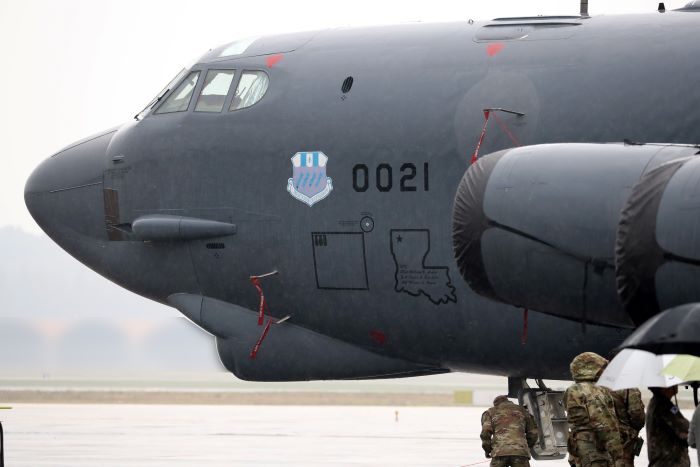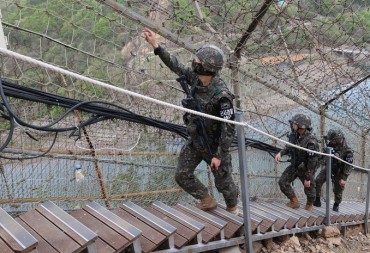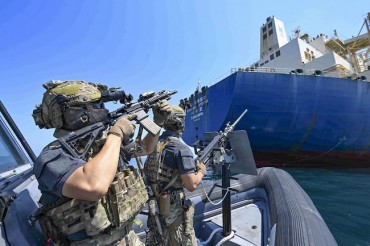
A U.S. B-52H strategic bomber is seen at an air base in Cheongju, 112 kilometers south of Seoul, on Oct. 19, 2023 in this photo released by South Korea’s defense ministry. (Yonhap)
WASHINGTON, Oct. 27 (Korea Bizwire) – The United States will pursue a modern variant of the B61 nuclear gravity bomb, a centerpiece of America’s nuclear stockpile, to respond to a “rapidly evolving” security environment, the Department of Defense said Friday.
The move to produce the variant, designated as the B61-13, comes as the U.S. is striving to manage its military preeminence in the midst of China’s growing assertiveness, Russia’s protracted war in Ukraine and growing tensions in the Middle East not to mention North Korea’s recalcitrance.
“The decision to pursue this capability, which was undertaken in close collaboration with the NNSA, responds to the demands of a rapidly evolving security environment as described in the 2022 Nuclear Posture Review,” the Pentagon said in a press release.
The NNSA stands for the Department of Energy’s National Nuclear Security Administration.
Assistant Secretary of Defense for Space Policy John Plumb said that the announcement on the pursuit of the new variant is reflective of the growing threats from potential adversaries.
“The United States has a responsibility to continue to assess and field the capabilities we need to credibly deter and, if necessary, respond to strategic attacks, and assure our allies,” Plumb was quoted as saying in the release.
The B61-13 would be deliverable by modern aircraft, strengthening deterrence against adversaries and assurance for allies and partners by providing the U.S. president with additional options against certain harder and large-area military targets, the Pentagon said.
It would replace some of the B61-7s in the current nuclear stockpile and have a yield similar to the B61-7, which is higher than that of the B61-12.
The Pentagon claimed that the pursuit of the B61-13 is not in response to any specific current event.
(Yonhap)






